You can embroider on any lockstitch sewing machine, in which you can adjust the tension of the upper and lower threads. The most convenient - a foot Central bobbin sewing machines, which are free to work with both hands embroiderers. You can use the old cars that you got from grandmothers and great-grandmothers.
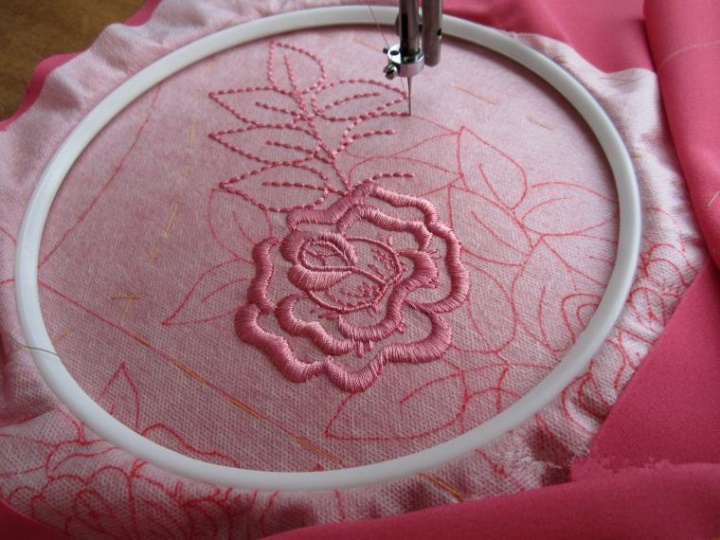
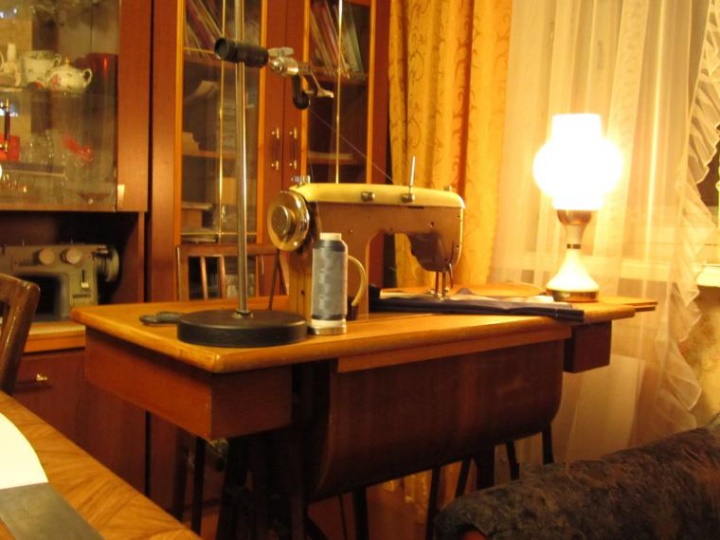
Modern machines are driven by an electric motor, and we need to have a manual or foot drive in the typewriter.
Unfortunately, embroidering with an electric motor is impossible! The fact is that at low speeds (with low pressure on the pedal), the motor shaft rotates unevenly, jerks. If in your typewriter the rheostat (the device in the pedal, changing the voltage) will ensure the slowest spinning of the flywheel and at the same time the needle movement will be smooth, without jerks, it will be your incredible luck! My Seagull can not! And, frankly, I do not know of such cases, when the machine with the electric drive allowed to do embroidery. And you can embroider only with a small number of revolutions of the machine, since the movement of the hoop is possible only in the intervals between the punctures of the tissue with the needle. Need consistency of the hands and feet, which will necessarily appear in time. And at the very beginning your right hand will almost always lie on the flywheel,
It is very important to properly adjust, prepare the machine for embroidery. Let's do it!
Setting up the machine for embroidery
1. Remove the presser foot.
2. Lower the teeth of the engine of the fabric or completely remove them, if in the future you will use the machine only for embroidery
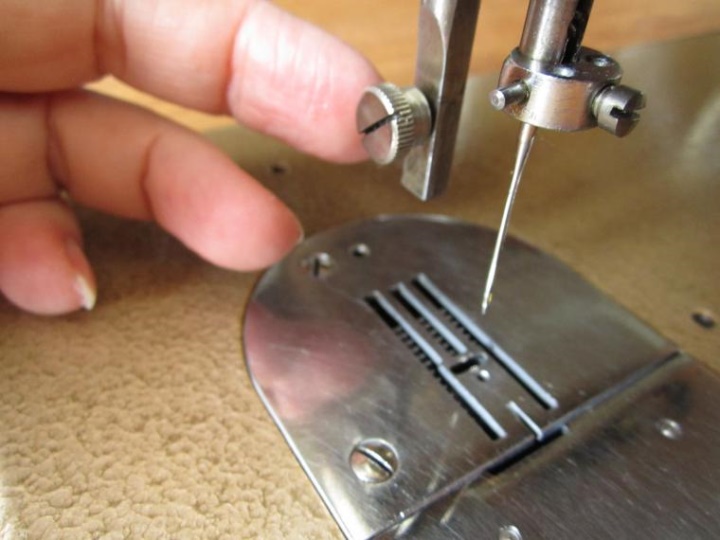
3. Adjust the tension of the upper and lower threads.
The tension of the upper thread is weaker in the embroidery than in the lower one, since the interweaving of the thread during embroidery should be on the underside of the fabric, and not in the middle of the fabric (s), as required for sewing. Using a knurled nut, turn the anti-clockwise knob with the presser foot lowered.
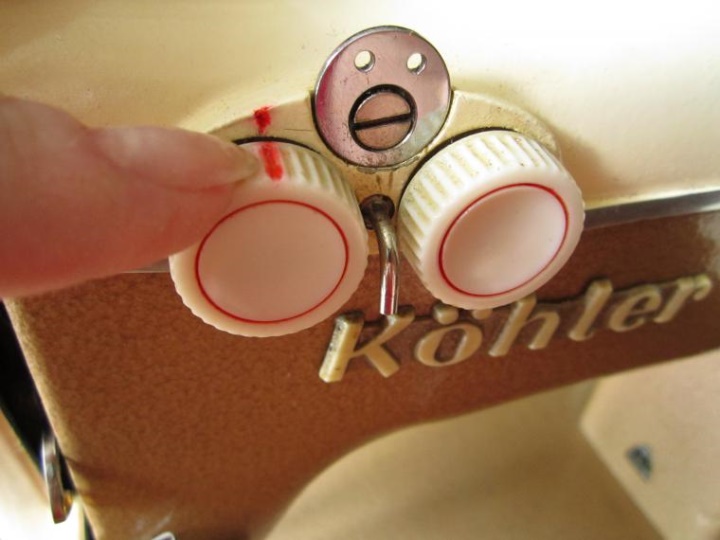
The lower thread tension is adjusted by the screw on the bobbin case.
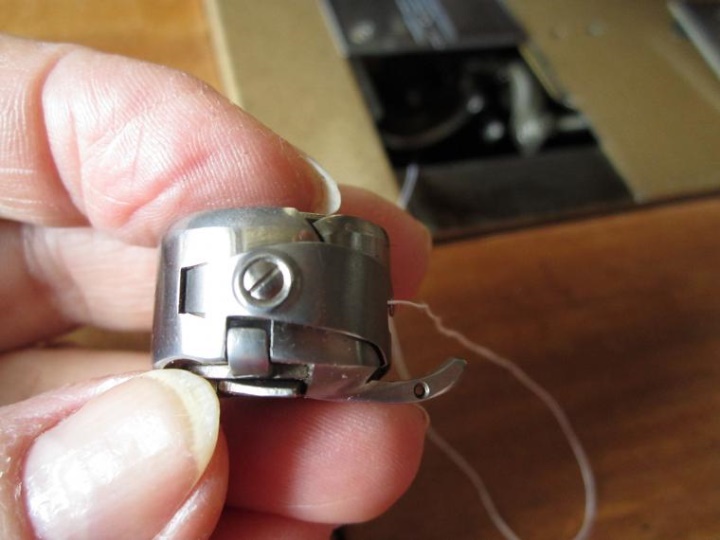
4. Install the needle that is suitable for you. The needle number must match the thickness of the fabric and the embroidery thread. (I have a needle number 90, since I usually do embroidery according to the average thickness of the fabric).
5. You will need a round embroidery frame with a low border and a small diameter, which should be smaller than the sleeve of the machine or equal to it, so that when embroidery is done, there is always room for the hoop to spin.
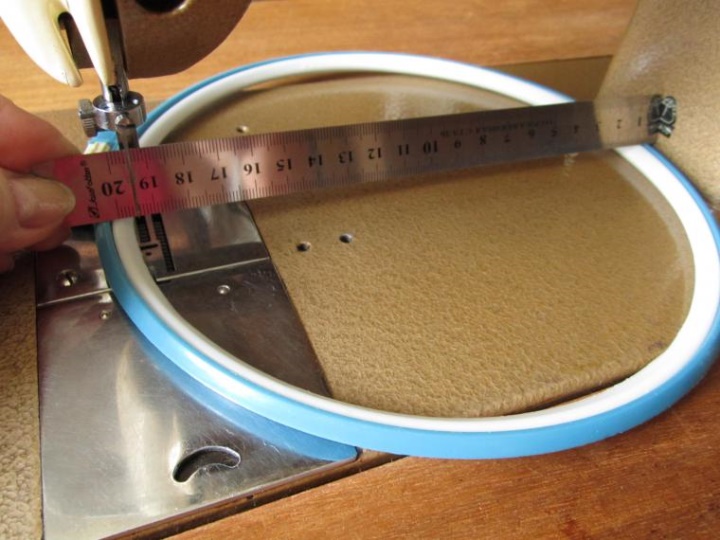
6. The embroidery pattern you want to make is best done on a water soluble stabilizer .
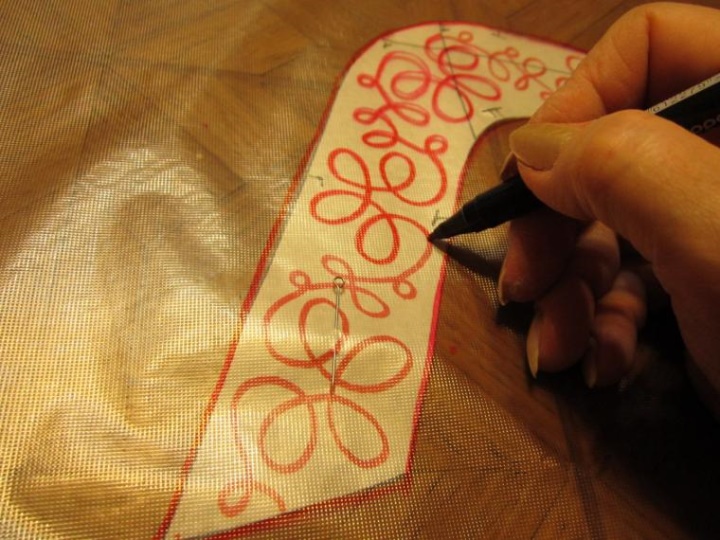
The use of carbon paper or the transfer of a figure to fabric by the method of mashing, when there is such a fine material as a water-soluble stabilizer, this is the last century. Why do not I recommend these two methods?
Considering the fact that now most of the tissues in their composition contain elastic threads, they are stretched, they are just so, without fixing with dublerin or non-woven fabric (and this, among other things, also additional thickening of the tissue), do not become dull. It is an inextensible, transparent, water-soluble stabilizer that allows you to embroider on pile and knitted fabrics!
In addition, the embroidery pattern stuck on the tracing paper, being transferred to the fabric with a special mixture of kerosene and tooth powder or blue (where else to take it, this blue?), Is a picture that still needs to be guessed. Since I, from the very beginning of studying embroidery (which was 25 years ago), refused to prune, I do not have my photos confirming my opinion. But, by analogy, look at the photo of the lap of the lace insert from the wrong side. Try to understand what kind of drawing it is? The bitmap pattern looks like this.
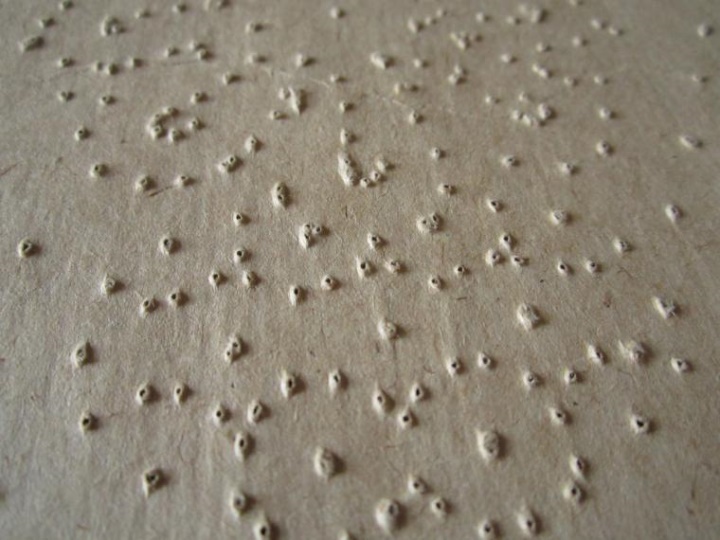
Compare now with a full-fledged drawing of weaving! It's quite another matter!
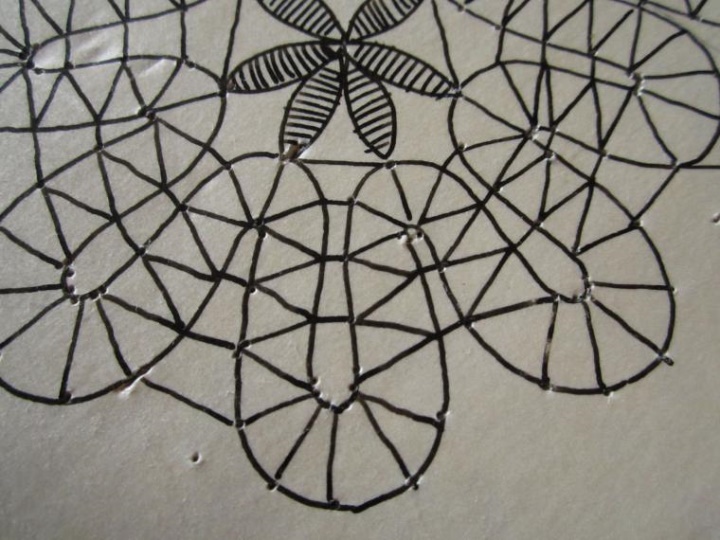
7. We put a cloth with a printed pattern or with a kneaded stabilizer in the embroidery frame.
On the table, put a large outer ring, on top of it - the fabric and then, applying a smaller inner ring over the fabric, press it, while pulling the fabric, be sure to observe the perpendicularity of the share and weft threads, without distortion. The tension should be very tight, like on a drum . If the fabric is not tight enough, it will move up and down with the needle and the seam will not work. Needle will not grab the bottom thread from the shuttle, will skip stitches.
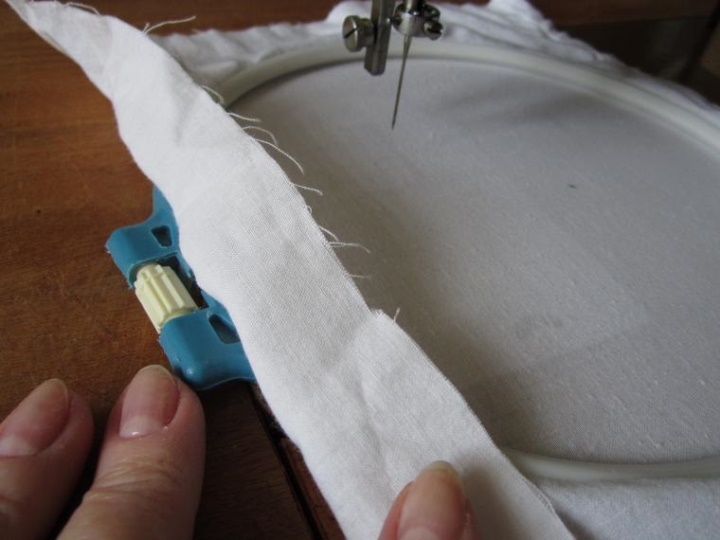
Similarly, skip stitches occur if, when the hoop moves, lifting them from the surface of the needle plate occurs.
Attention! Do not forget to lower the foot lever in the beginning of the job ! It is very important! Immediately on the wrong side, the thread begins to loop, but you do not see it, do not notice until the stitching, entanglement of the threads becomes obvious.
And never turn the wheel in the opposite direction! There will be a breakage of the thread!
You may need to weight the wheel of the pedal to give it the necessary inertia to go through the "dead point". I needed it! The wheel, approaching the "dead point", without the necessary inertia for its passage, stopped and began to move back, in the opposite direction, immediately breaking off the thread!
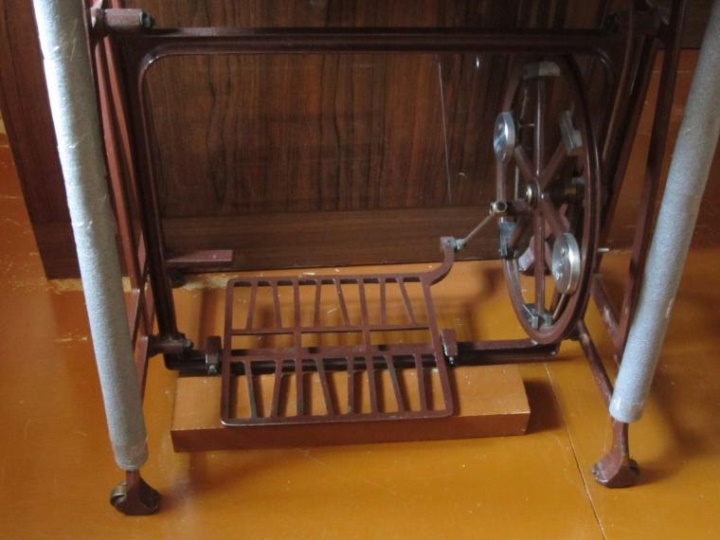

So, before starting work, check:
- correct tension of the upper and lower threads (in the needle and in the shuttle);
- the tension of the fabric in the frame;
- position of the presser foot lever;
- Set the stitch length dial to 0.
Draw the fabric under the needle in the embroidery frame, lower the foot lever, turning the handwheel with your right hand, pierce the fabric with a needle and, using the needle to grasp the lower thread, pull it upward.
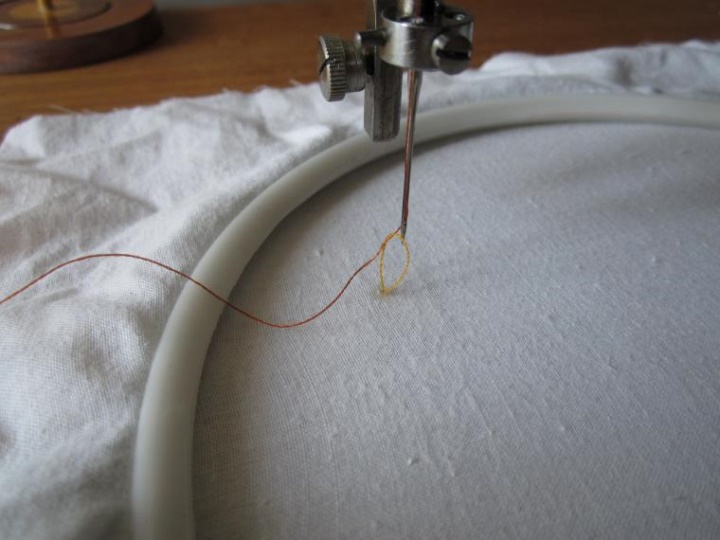
Fix the beginning of the line with several needle strikes, without moving the fabric, that is, making punctures almost at the same point. Cut the threads with small scissors.
Try to scribble in a straight line, make parallel stitches, spirals, achieving a uniform, beautiful stitch that does not go beyond the line of drawing.
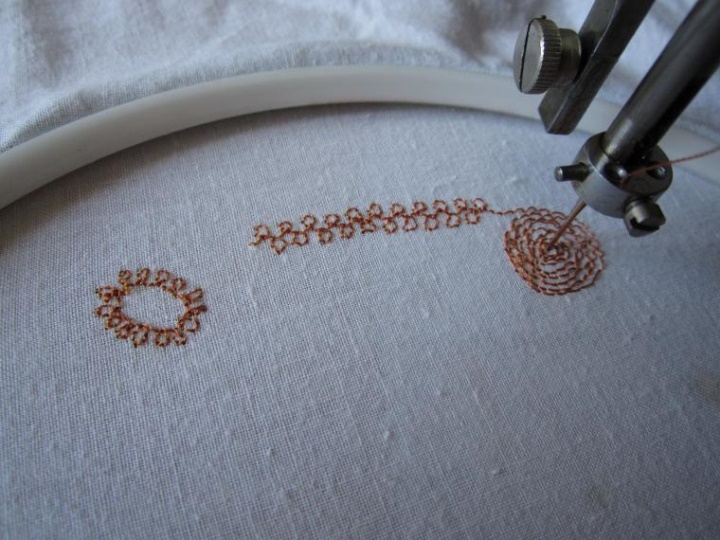
Patiently work until you acquire the appropriate skills. We need coordinated work of hands and feet, and this does not work at once!
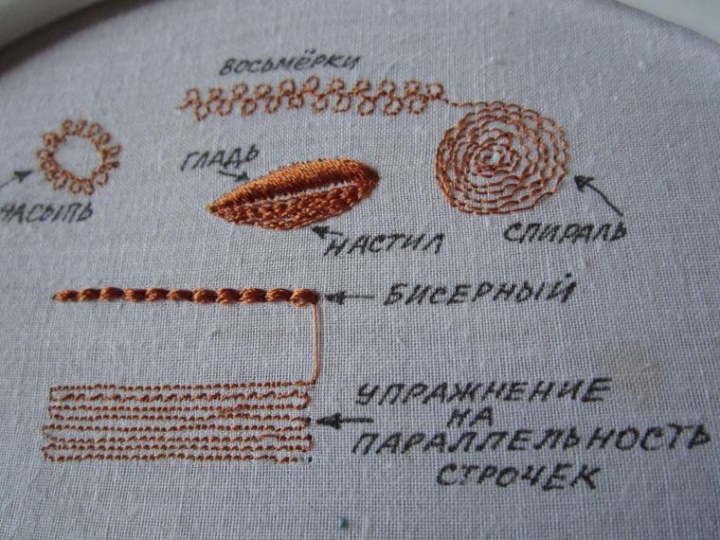
Quickly working with your feet and slowly moving the embroidery frame - get a small, frequent stitch. Quickly moving the frame and slowly legs - get large, long stitches.
Remember that the beauty of your embroidery depends on your accuracy, the accuracy of the pattern, the accuracy of your stitches, the applied seams, stitches, the beauty of the threads used.
Always a simple pattern of embroidery is much more interesting, looks nicer in the material!
And how we can enrich our embroidery, improve your product and improve and even correct the shortcomings of the figure, we all know.
Basic stitches of machine embroidery
With the machine you can perform many seams of hand embroidery, but much faster and easier than with your hands.
The main seams include a stitch and a smooth roller (cordone).
Lines - this is the simplest kind of embroidery: a simple stitch, a willyuk, loops, a spiral, a mound.
A simple stitch is the most frequently used line in embroidery. Maybe self-embroidery.
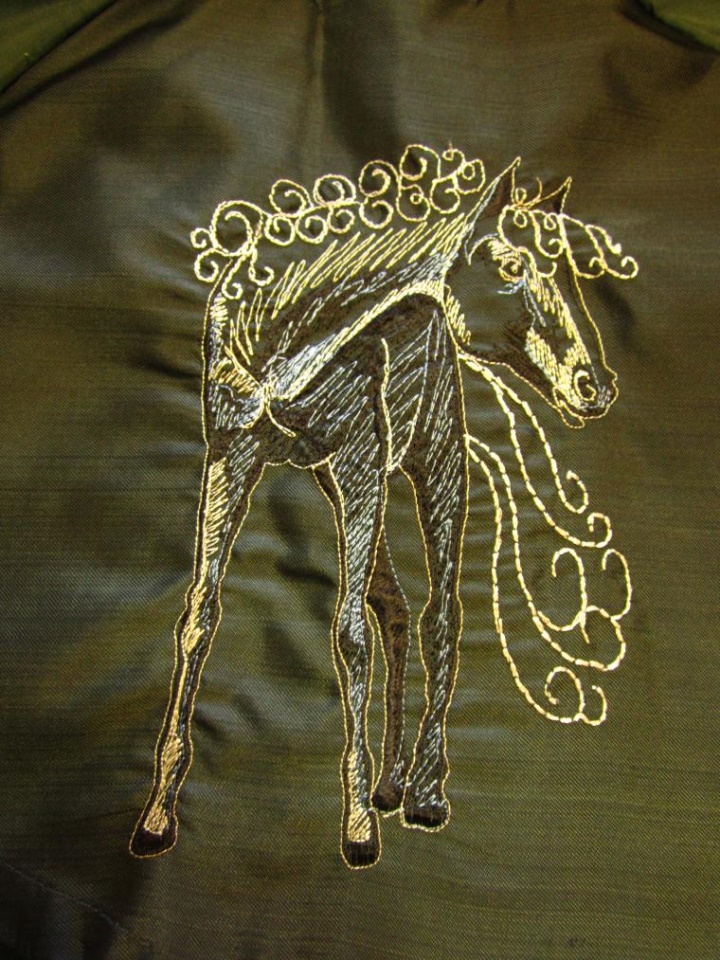
These are small, uniform, even stitches that are only 1-1.5 mm long. Straight stitching lines embroidery pattern, fill the space inside any fragments of embroidery, make the flooring to increase the volume of embroidery by the smoothness, create shadows with tonal embroidery, embroidering portraits.
Seams "Vilyushka", "Eight", "spirals", "embankment" - are also performed in small, identical stitches, loops.
The glazed roller "cordon" is also very often used in embroidery. First, you need to make a simple line around the outline of the picture, then take the crocheting cotton thread No. 10-40 into one or double addition and, fixing the beginning of the thread with several strokes, overlap it with frequent transverse, identical stitches, trying to make needle punctures as close to the cuffs . The overlapping of the laying thread must be so tight that it can not be seen at all. And yet it is desirable to select the cuff thread in the color of the embroidery thread.
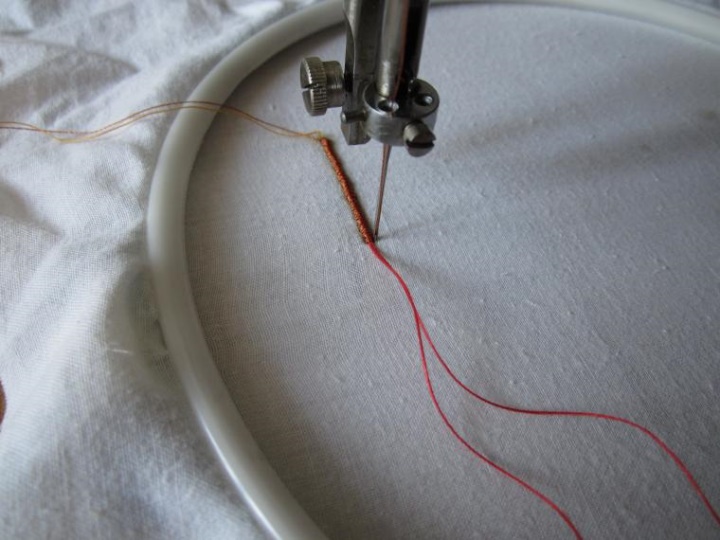
Correctly executed glaucous roller should be smooth, convex, narrow and practically no wider than the laying thread (or 2 threads).
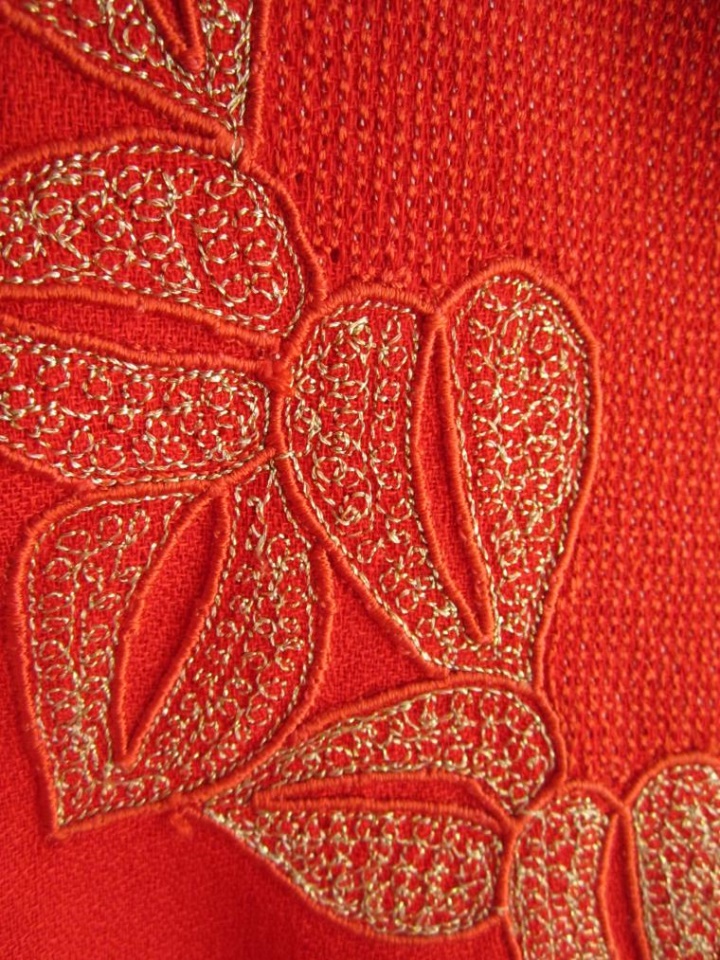
The interlining thread gives a beautiful rounded shape to the roller , and when embroidered with festoons and "Richelieu" gives a strong, strong, beautiful edge. By the way, you can do bridges for durability with the braiding of the laying yarn and subsequent processing with a roller.
" Richelieu" is an openwork embroidery, which is a pattern made of cloth, trimmed with a smooth roller, the circle of which is carved with a background. "Richelieu" is without breeds and with brides.
Brides are air lines in embroidery "Richelieu".
"Richelieu" can be performed against the background of a strings grid.
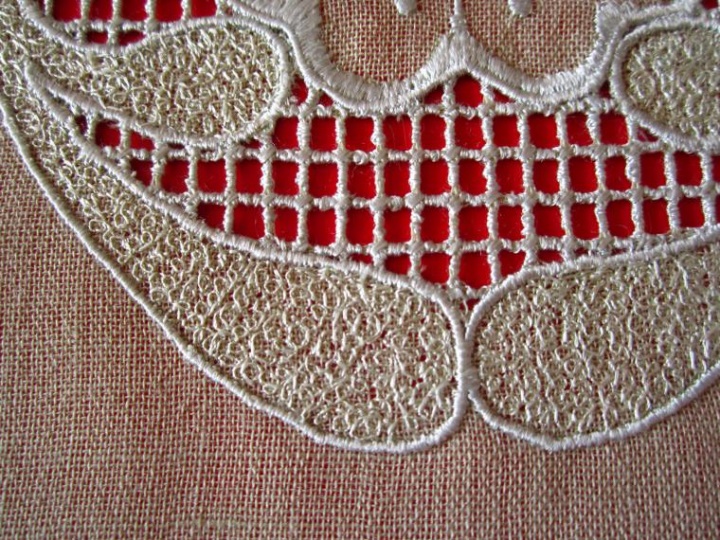
To perform a stitch net, you need a cloth with a plain weave. If the threads of the fabric are duck-based and of a different thickness, then the calculation of the yarn pulls is different, so that the mesh (holes) of the mesh are square. After yarn pulling, the net of the remaining threads is wrapped around the embroidery thread, moving diagonally across the square starting at the corner.
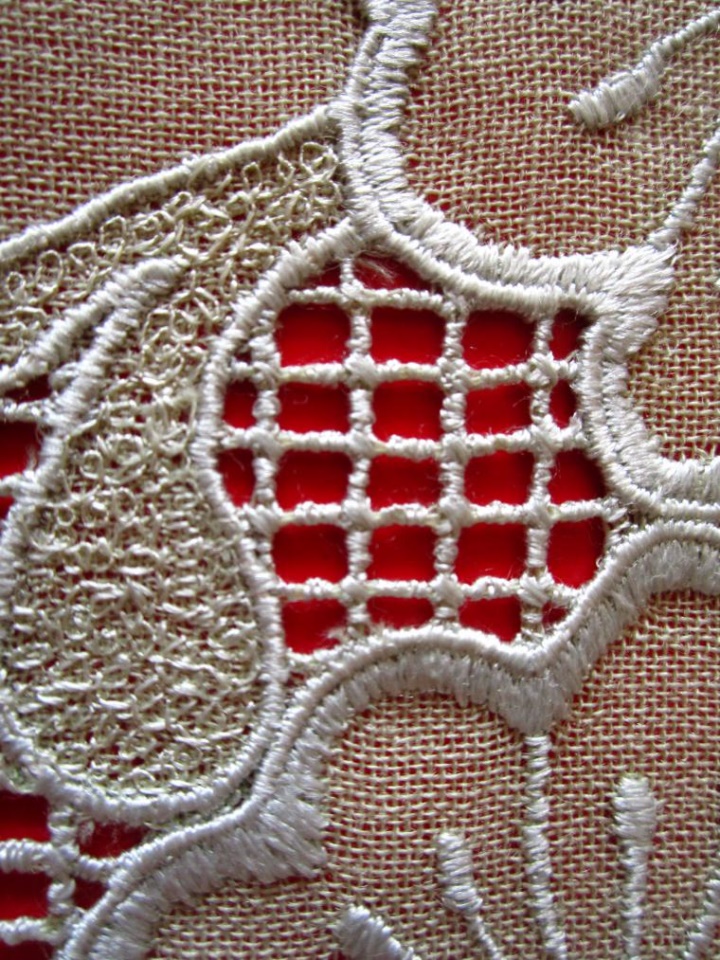
The smooth, semi-smooth, prismatic smooth surface - this is also very often used in embroidery. Carry out the smooth surface with neat, closely spaced stitches that are parallel to each other or under a slight slope.
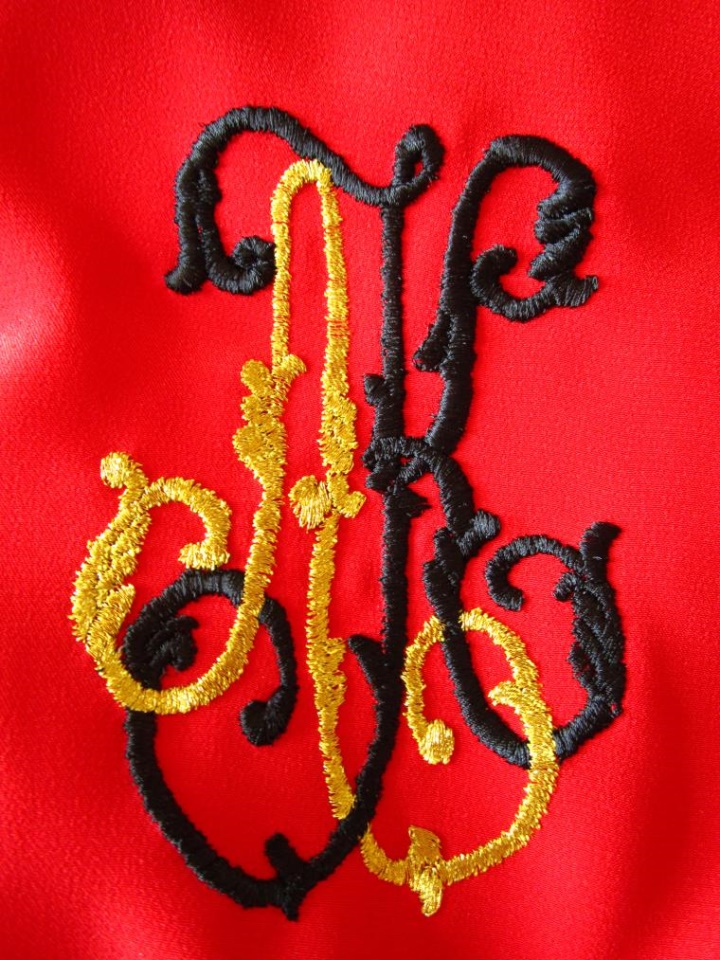
There is still a kind of embroidery that I really like, it's embroidery and a thumb. You can beautiful thick thread or twisted cord, put the sout on the drawing.

With soutache. Pre-laid out small loops sotazhom, fixing them with a manual stitch, and then made a line on the machine.
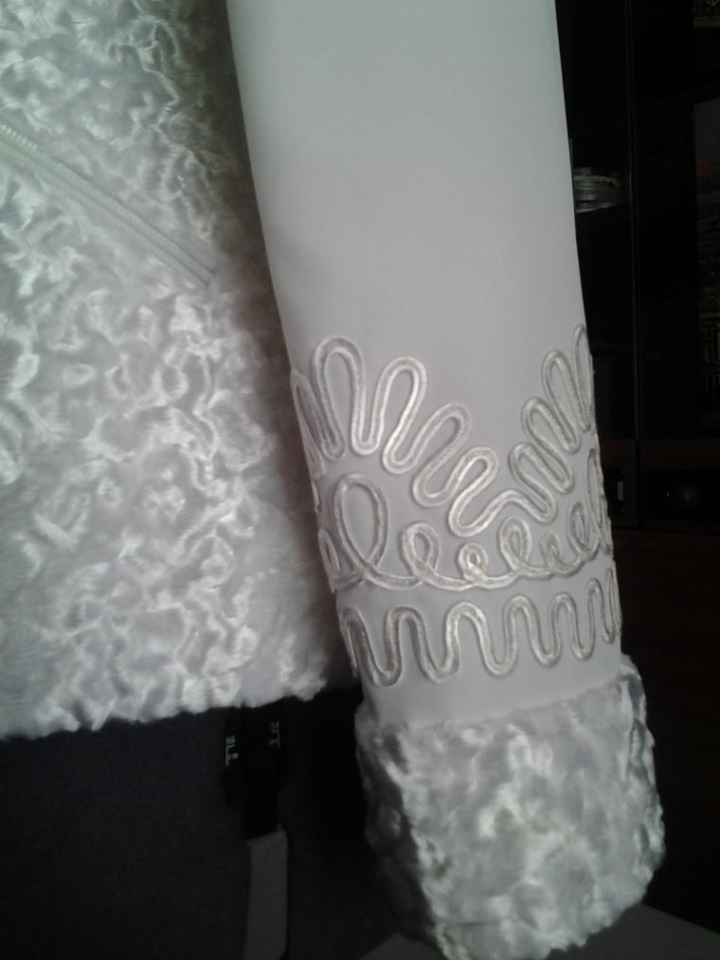
A lot of types of embroidery (stitching, smoothing, azhury, "Richelieu", guipure, applique, artistic smoothness) with their mastery and high-quality performance are unusually expanding your artistic and creative possibilities.
I very much wish everyone who sews and loves this business, learn how to embroider! The more, your sphere of interests, skills, abilities will be wider, the more abruptly you will be like a master! I wish you this!